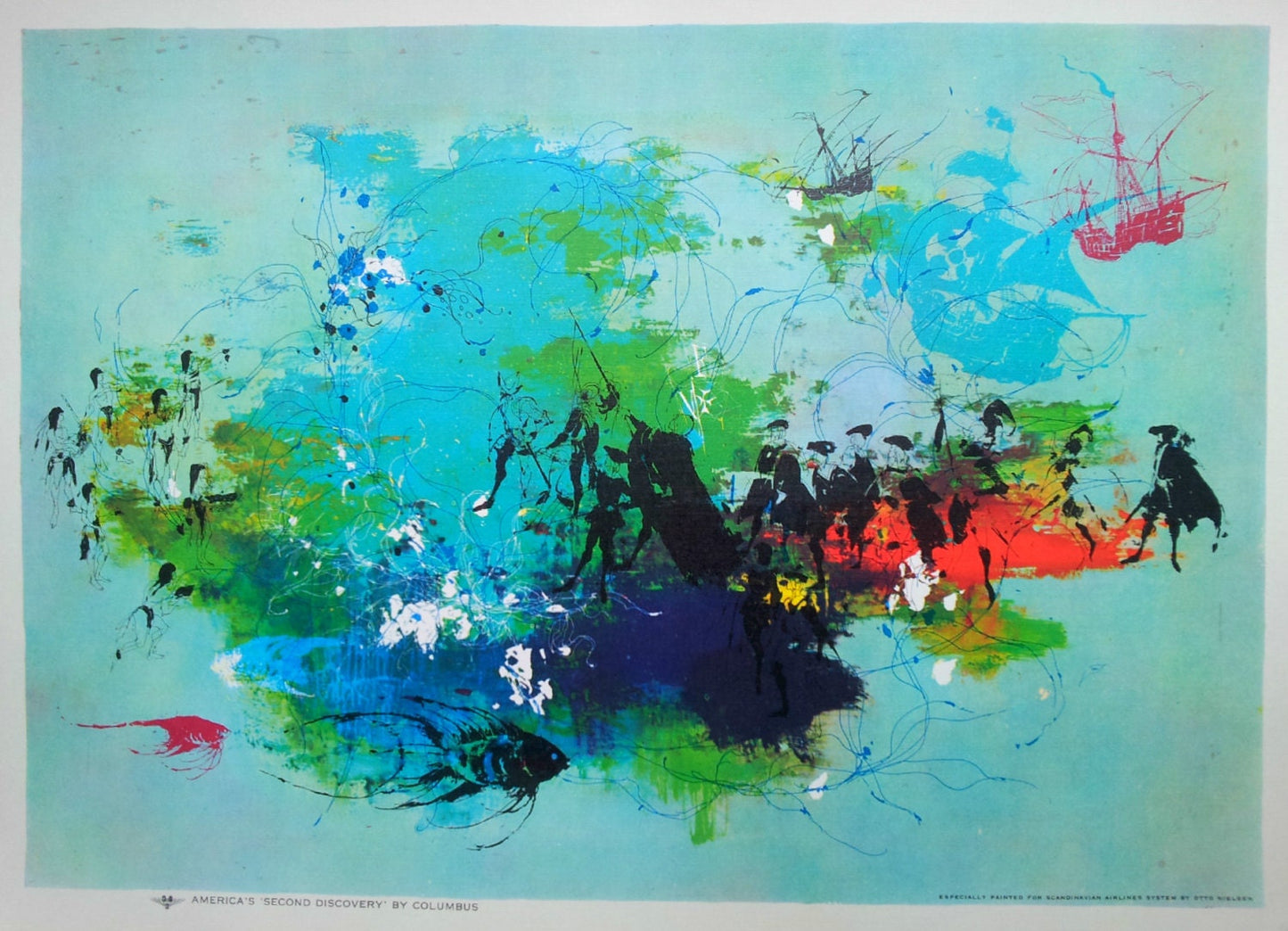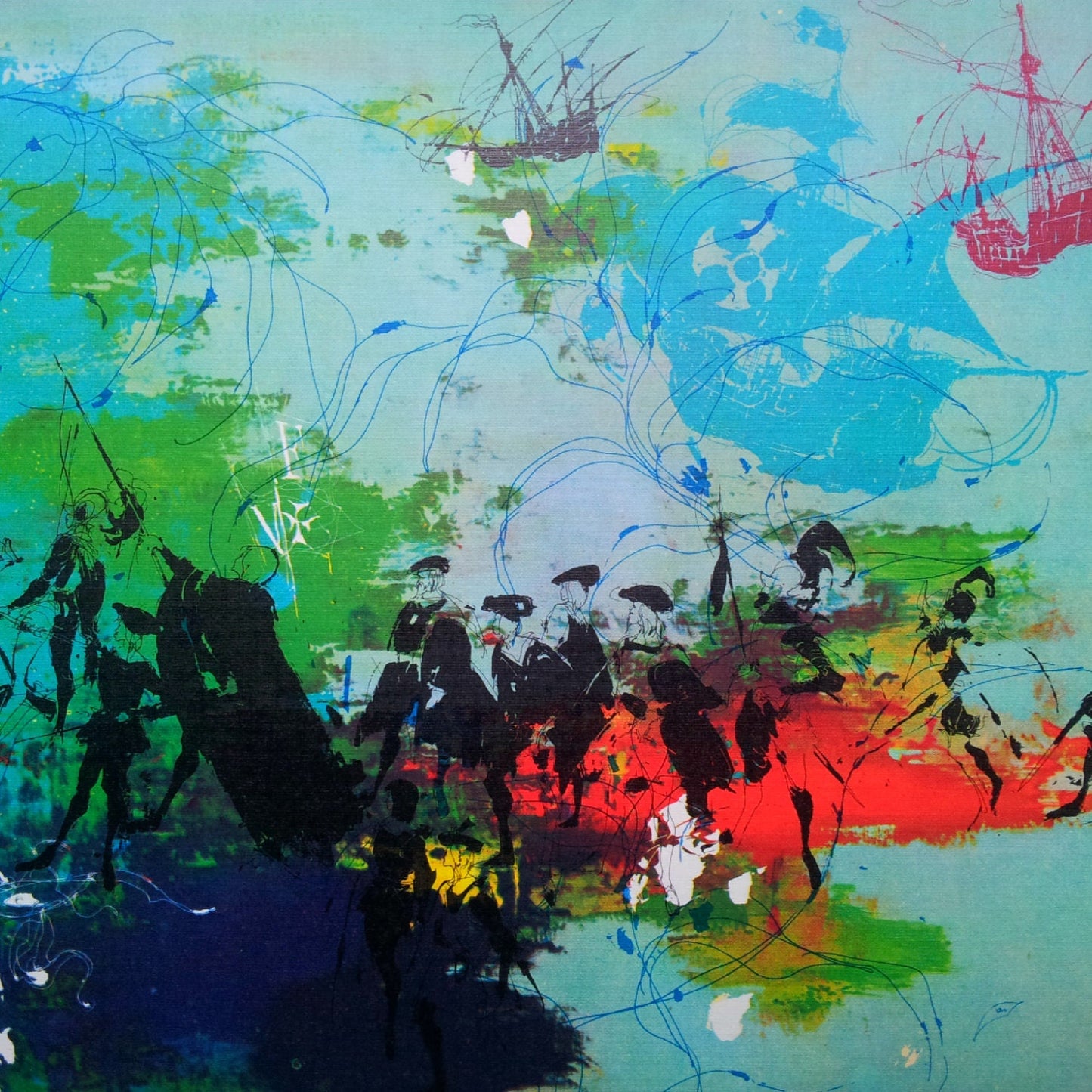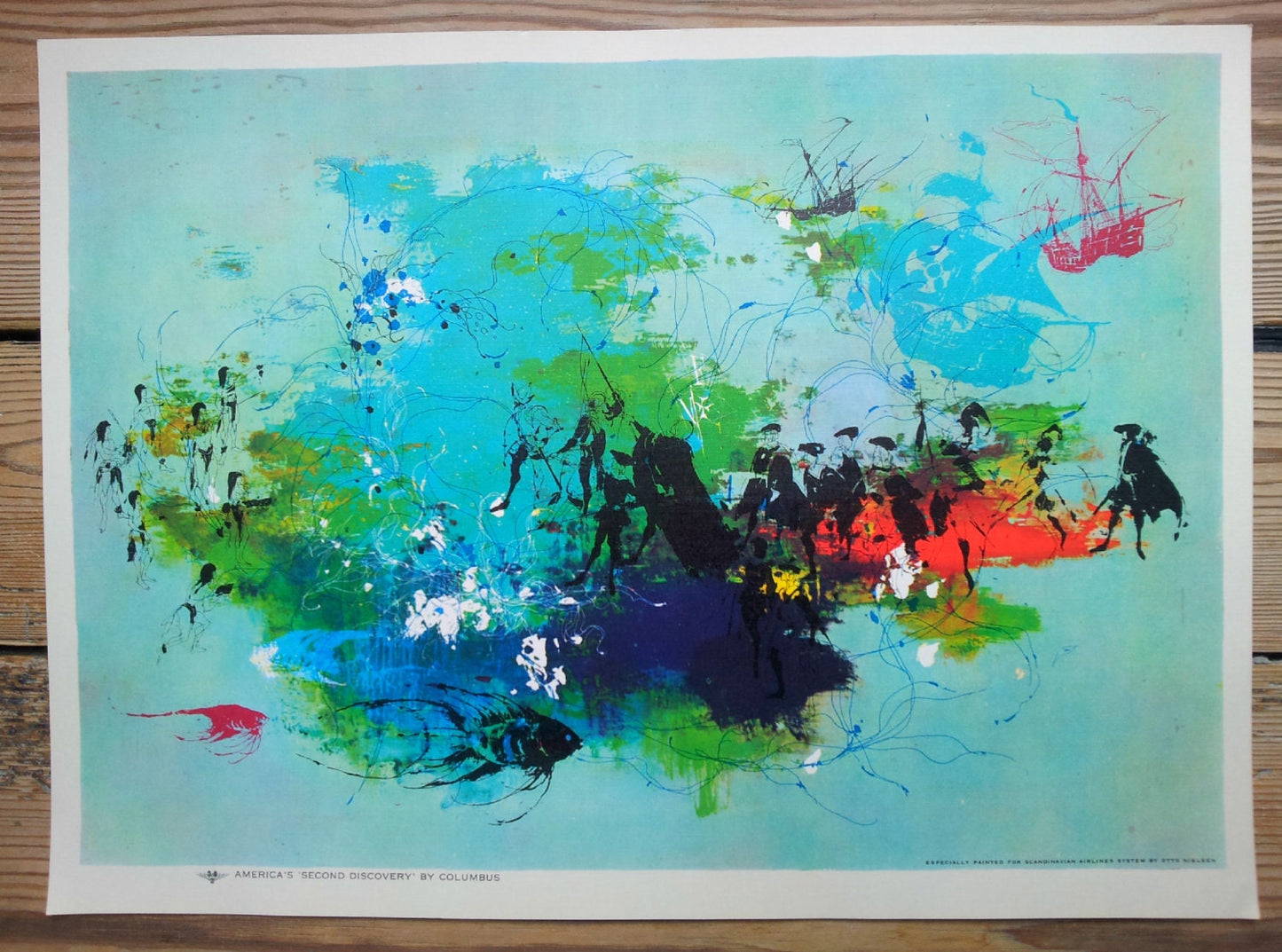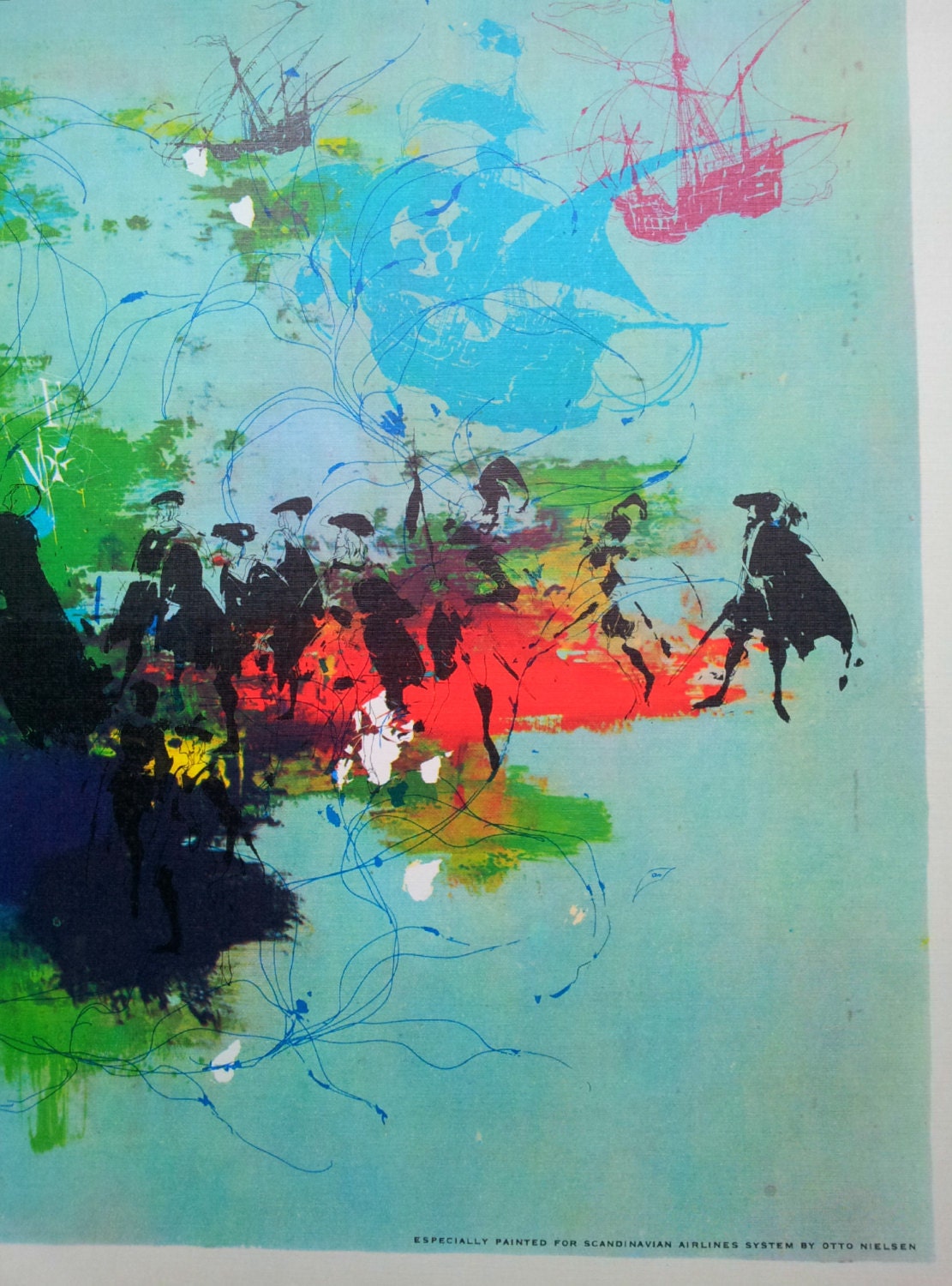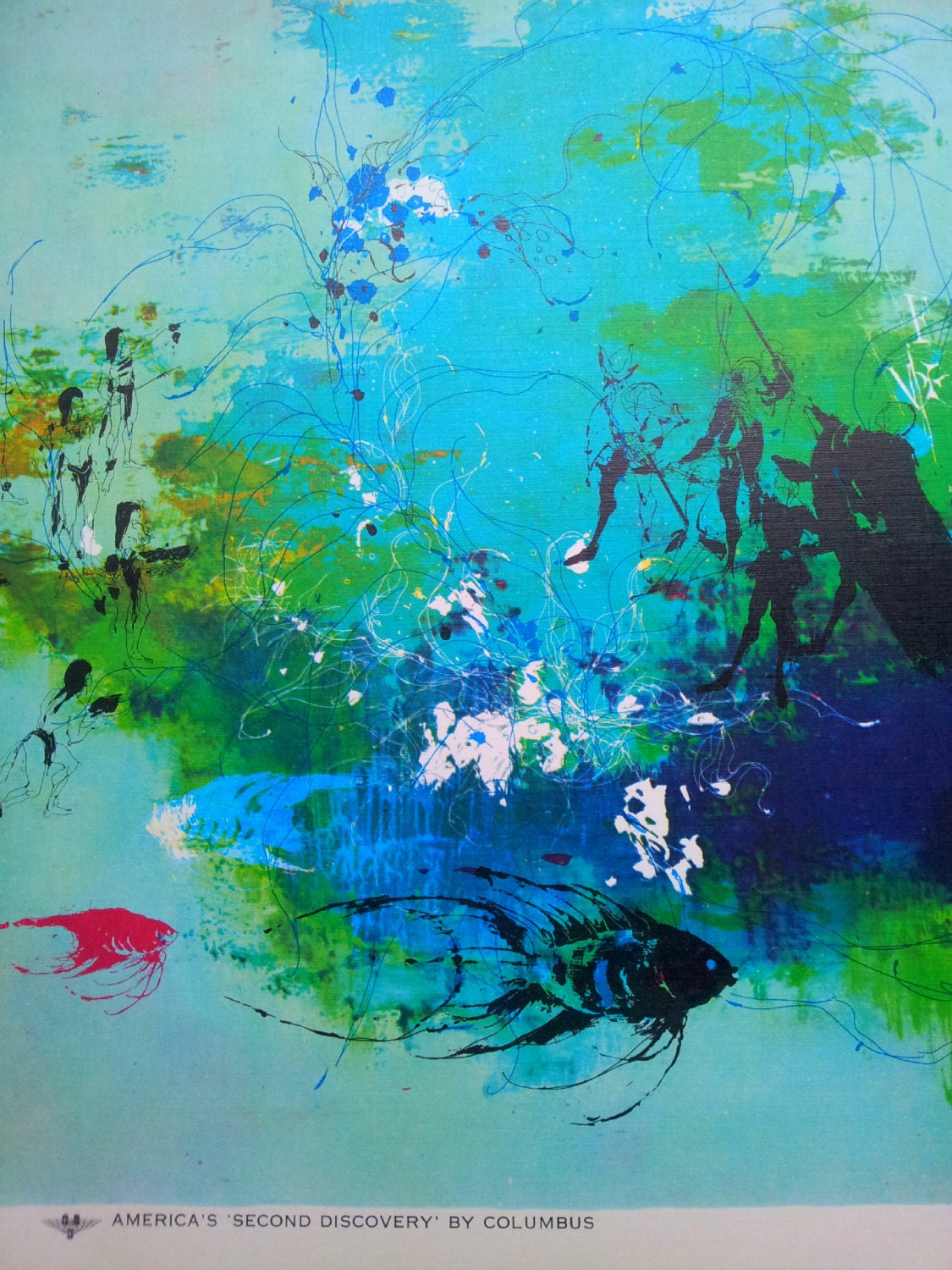1
/
of
5
Out of Copenhagen
1961 SAS Airlines Poster (Columbus) - Original Vintage Poster
1961 SAS Airlines Poster (Columbus) - Original Vintage Poster
Regular price
700,00 DKK
Regular price
Sale price
700,00 DKK
Unit price
/
per
Prices include VAT for EU customers. Local taxes or import duties may apply outside the EU.
Couldn't load pickup availability
This rare and colorful beauty of a poster was originally intended to be a part of the SAS calendar of 1961 with the theme of "The great discoveries of the world" by the famous Danish artist Otto Nielsen.
Christopher Columbus (1451-1506) was an Italian explorer, navigator, and colonizer, born in the Republic of Genoa (Italy). Under the auspices of the Catholic Monarchs of Spain, he completed four voyages across the Atlantic Ocean that led to general European awareness of the American continents. Those voyages, and his efforts to establish permanent settlements on the island of Hispaniola, initiated the Spanish colonization of the New World.
In the context of emerging western imperialism and economic competition between European kingdoms seeking wealth through the establishment of trade routes and colonies, Columbus' speculative proposal, to reach the East Indies by sailing westward, eventually received the support of the Spanish crown, which saw in it a chance to gain the upper hand over rival powers in the contest for the lucrative spice trade with Asia. During his first voyage in 1492, instead of reaching Japan as he had intended, Columbus landed in the Bahamas archipelago, at a locale he named San Salvador. Over the course of three more voyages, Columbus visited the Greater and Lesser Antilles, as well as the Caribbean coast of Venezuela and Central America, claiming them for the Spanish Empire.
Though Columbus was not the first European explorer to reach the Americas (having been preceded by the Norse expedition led by Leif Ericson in the 11th century), his voyages led to the first lasting European contact with the Americas, inaugurating a period of European exploration, conquest, and colonization that lasted for several centuries. They had, therefore, an enormous impact in the historical development of the modern Western world. Columbus himself saw his accomplishments primarily in the light of spreading the Christian religion.
Never admitting that he had reached a continent previously unknown to Europeans, rather than the East Indies he had set out for, Columbus called the inhabitants of the lands he visited indios (Spanish for "Indians"). Columbus' strained relationship with the Spanish crown and its appointed colonial administrators in America led to his arrest and dismissal as governor of the settlements on the island of Hispaniola in 1500, and later to protracted litigation over the benefits which Columbus and his heirs claimed were owed to them by the crown.
Since they come as individual posters they are much more beautiful (no waste of paper for the calendar dates) and easier to frame and hang on the wall. The poster is in perfect condition and is in a great thick paper quality which measures 15.9 x 11.6 in (40.5 x 29.5 cm).
Thanks for watching and please let me know if you have any questions.
Only 1 available
Christopher Columbus (1451-1506) was an Italian explorer, navigator, and colonizer, born in the Republic of Genoa (Italy). Under the auspices of the Catholic Monarchs of Spain, he completed four voyages across the Atlantic Ocean that led to general European awareness of the American continents. Those voyages, and his efforts to establish permanent settlements on the island of Hispaniola, initiated the Spanish colonization of the New World.
In the context of emerging western imperialism and economic competition between European kingdoms seeking wealth through the establishment of trade routes and colonies, Columbus' speculative proposal, to reach the East Indies by sailing westward, eventually received the support of the Spanish crown, which saw in it a chance to gain the upper hand over rival powers in the contest for the lucrative spice trade with Asia. During his first voyage in 1492, instead of reaching Japan as he had intended, Columbus landed in the Bahamas archipelago, at a locale he named San Salvador. Over the course of three more voyages, Columbus visited the Greater and Lesser Antilles, as well as the Caribbean coast of Venezuela and Central America, claiming them for the Spanish Empire.
Though Columbus was not the first European explorer to reach the Americas (having been preceded by the Norse expedition led by Leif Ericson in the 11th century), his voyages led to the first lasting European contact with the Americas, inaugurating a period of European exploration, conquest, and colonization that lasted for several centuries. They had, therefore, an enormous impact in the historical development of the modern Western world. Columbus himself saw his accomplishments primarily in the light of spreading the Christian religion.
Never admitting that he had reached a continent previously unknown to Europeans, rather than the East Indies he had set out for, Columbus called the inhabitants of the lands he visited indios (Spanish for "Indians"). Columbus' strained relationship with the Spanish crown and its appointed colonial administrators in America led to his arrest and dismissal as governor of the settlements on the island of Hispaniola in 1500, and later to protracted litigation over the benefits which Columbus and his heirs claimed were owed to them by the crown.
Since they come as individual posters they are much more beautiful (no waste of paper for the calendar dates) and easier to frame and hang on the wall. The poster is in perfect condition and is in a great thick paper quality which measures 15.9 x 11.6 in (40.5 x 29.5 cm).
Thanks for watching and please let me know if you have any questions.
Only 1 available
Share
